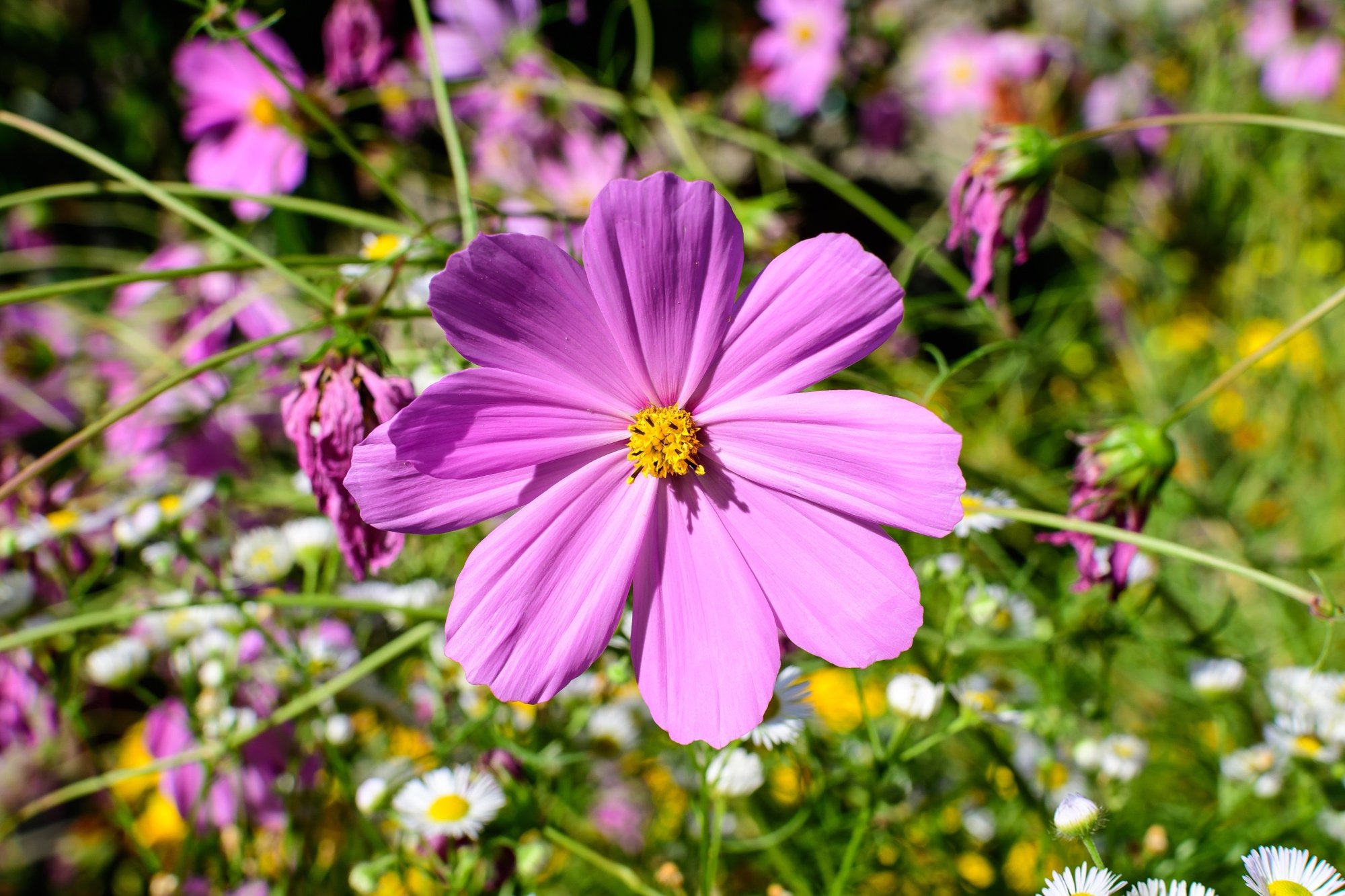Table of Contents
Attention plant-lovers! If you are thinking of building an exquisite garden or simply want vibrant plants indoors, the cosmos is the answer.
The word cosmos comes from the Greek ‘kosmos’, meaning beautiful. They are sun-loving plants with colourful flowers turning your place into a fairyland. The flowers blossom into various colours, from pastels and whites to bright ones like pinks and oranges. And they are incredibly easy to grow. Just plant the seeds in the garden, water them properly, and you are done.
The best part about growing cosmos is they prefer poor fertility soils, so you don’t have to worry about vegetables going bad. These flowers form a cloud of lively colours attracting bees, butterflies and birds chirping in your garden. So, put on your gardening shoes and follow these six steps to produce cosmos in pots.
How to Breed Cosmos in Pots?
Unlike other plants, the cosmos will marvellously flourish even after being neglected. And, it wouldn’t perish away as its soil needs fewer nutrients and water.
1. Planting the Cosmos
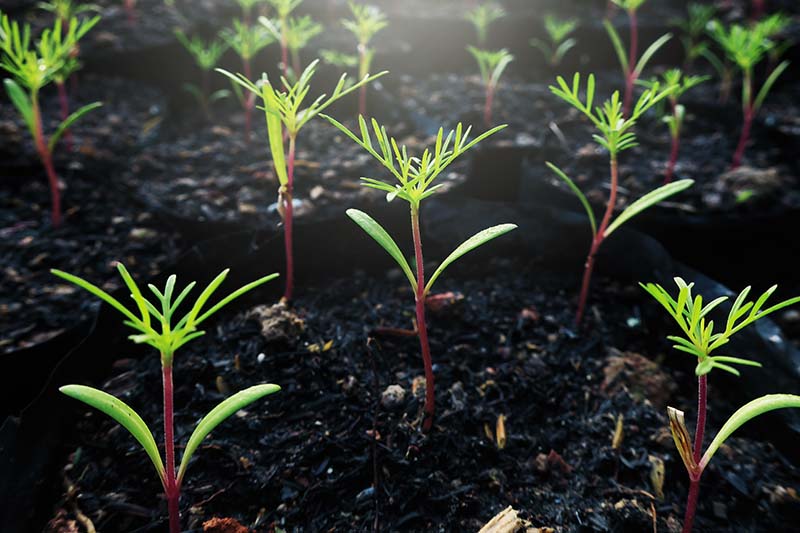
Cosmos are relatively easier plants to seed, grow and care for. The only thing to worry about is placing them in a proper position. You can start by choosing a clay or concrete pot at least 30cm across with various drainage holes at the base. One way to plant cosmos is by inserting the seeds about half an inch deep into the potting soil. Cover them up with more soil and water them appropriately. Or, soak the bare roots outside, and transplant them later into a container. Seedlings, when planted indoors, will take up to 4-6 weeks to mature and requires protection from colder temperatures.
Whereas the outdoor ones will grow much sturdier, and that’s when you transfer them into a pot. Place all the vessels in a sunny spot, away from stronger winds, for 6 hours of sunlight.
2. Watering Precisely
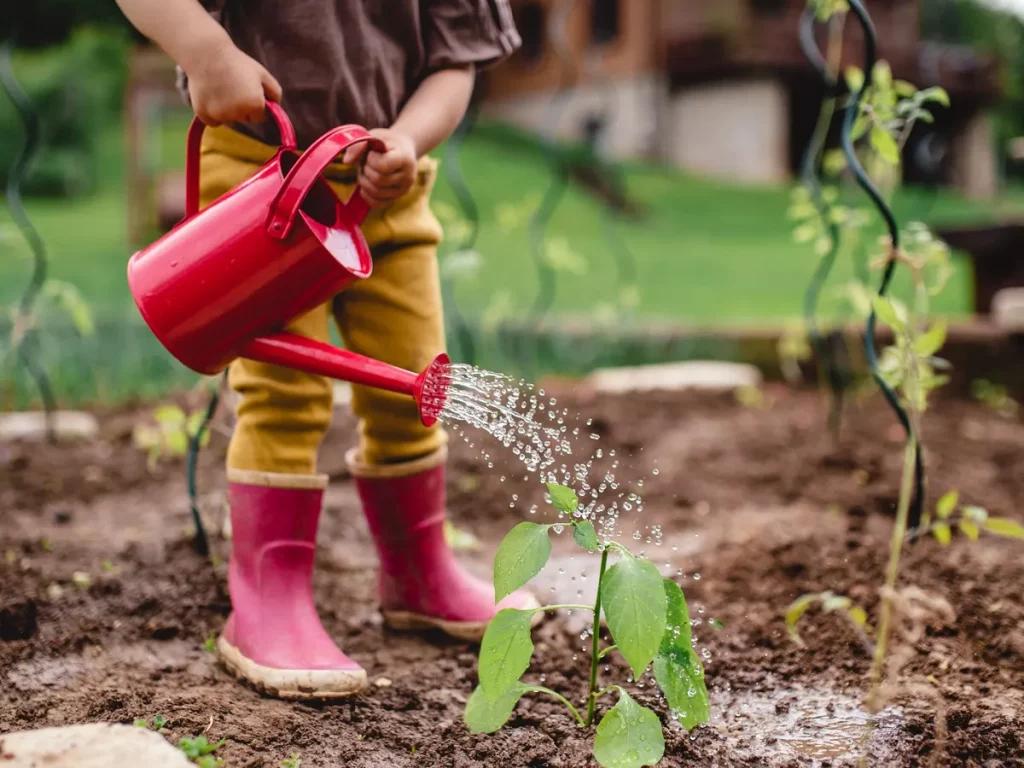
Once planted, the seeds need to be watered adequately for the first six weeks. It should be done using the bottom-watered technique. It’s a process in which you hydrate the roots from the bottom up through drainage holes instead of pouring water from the top. That’s one of the main reasons why growing cosmos in pots is such a good idea. Afterwards, check the surface of the plant every day before watering. Water deeply if it feels dried up, and let the extra moisture drain off.
In the case of extreme heat or the absence of rain, water your plant more frequently. As long as your plant’s moisture stays consistent, the cosmos will continue blooming relentlessly.
3. Bamboo Staking
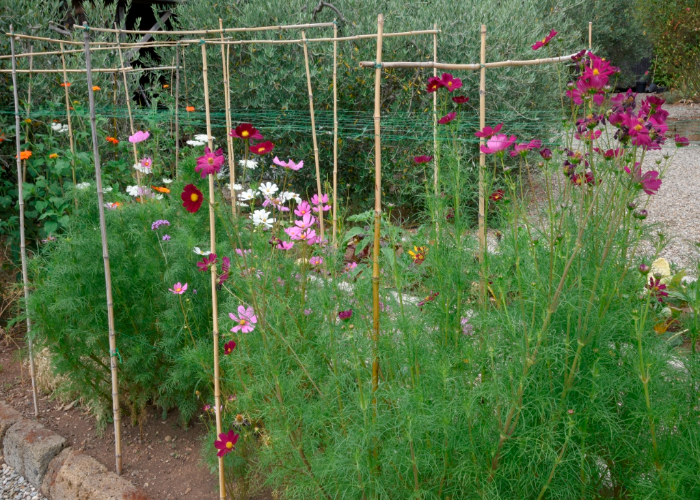
Some cosmos’ height goes up to 8 feet, and flowers can spread to 3 inches across. To stand tall, they need support as they can’t always hold up the heavier flowers. The foliage also becomes quite sensitive and fragile when the cosmos reaches such height. Try using bamboo stakes and press them deeply into the stem. Pick out a green jute twine so it jells up and doesn’t take away the beauty of your colourful flowers. Wrap around the string in a square or star-shaped form between the stakes.
So, when the stems grow up, they will have stakes to lean onto. However, this process must occur before planting or while the seeds are still small. That way, the roots don’t get damaged, and your plant gets a strong foundation.
4. Pinching and Deadheading Cosmos
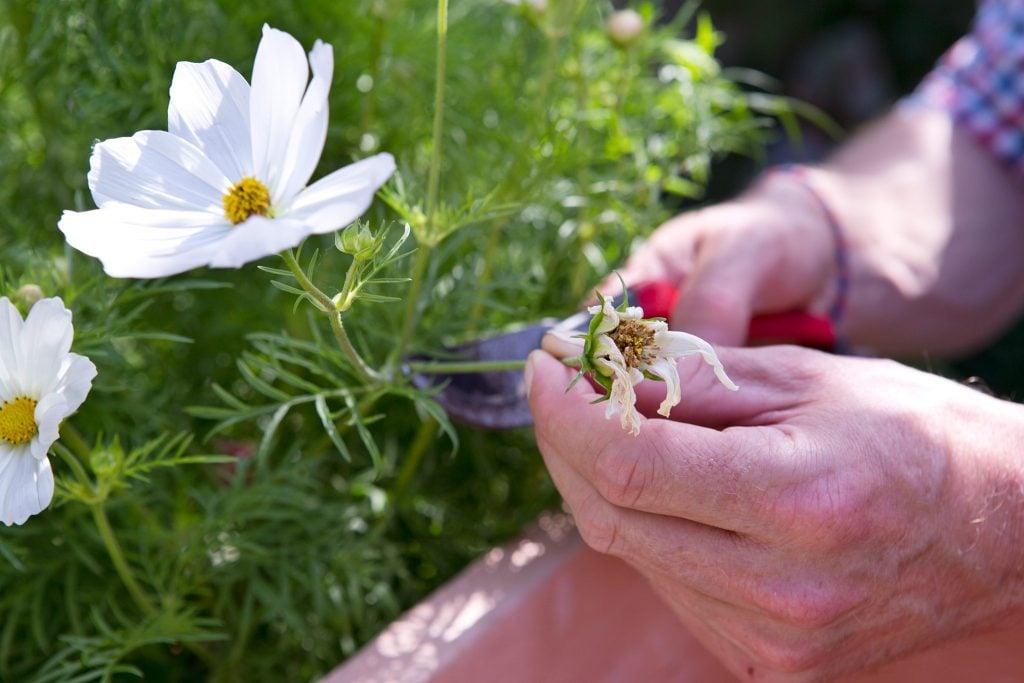
When your plant becomes 4-8 inches tall, it’s time to pinch it. Don’t squish them aggressively; lightly pinch the stem above the leaves. Doing so at growing stages promotes branching, leading to chipper flowers. Cosmos being a herbaceous plant doesn’t require pruning. So, to maintain and promote newer growth, the cosmos in pots need deadheading. It’s a process of removing old growth and faded flowers from the plant for the regeneration process.
You can cut the dead flowers from the base of the stem and can go deeper if required. Maintaining regular cuts keep your plant thriving too. Snipping stems at 8-12 inches in length can also make for a beautiful bouquet or arrangement if used as cut flowers.
5. Repotting the Annuals
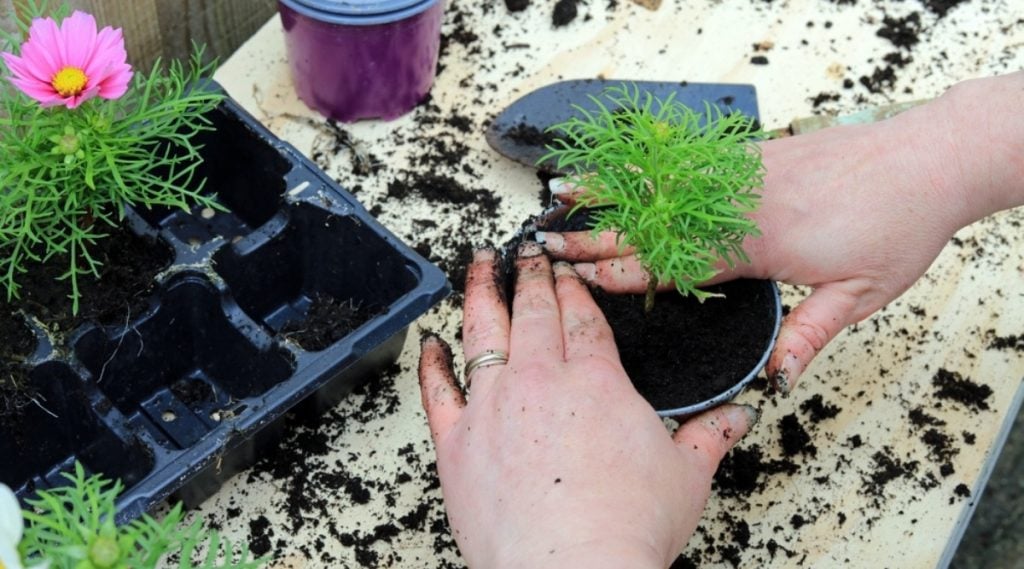
Usually, the cosmos don’t need to be repotted unless you plant them in a container of the wrong size. People often use a small pot at the start, and when the plant matures, it creates a problem. Begin preparing a new vessel by adding fresh potting medium to the base and transferring the plant. However, quickly check the roots for rotting and remove them if any are found before the transfer. Cosmos can’t handle overly wet or soggy soil, so ensure the new pot has a proper drainage system.
Water the new pot well enough with a watering can. Place the newly potted plant in a warm and cosy location to let it grow into a gorgeous plant.
6. Winter Protection
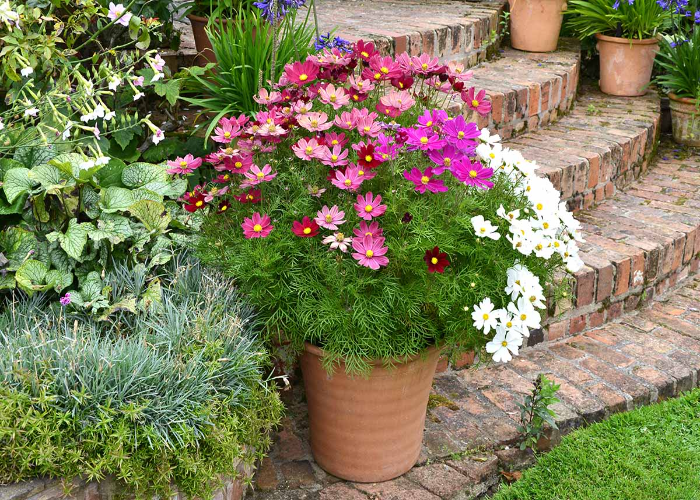
Cosmos are annual plants that germinate, flower, reproduces and dies in a single season. Moving the pot into a sheltered location is the only way to keep it alive when winters come. You can add a layer of bubble wrap or use burlap for added protection. You can buy and put a bright full, sunlight lamp over your cosmos to allow it to grow even in frosty weather. It will need at least 7 hours of lamp light daily to survive.
When the growing season ends, your plant may go dormant if you forget to trim the dead flower heads and set seeds. It will only sprout again once the soil warms up again in spring. So, very carefully, remove all the withered flowers and dead stems before changing their place.
Why Should You Consider Potting Cosmos?
Potting is the best when you have a small space and want to make your patio look more attractive and less messy. You will have the advantage of protecting your plants by quickly shifting them inside whenever required. And, with the ability to attract good insects, keeping them near your vegetables and fruit containers also proves beneficial. Growing cosmos in pots makes it easier to swap the older soil with a fresher one. And, if your plant dies or gets diseases, you can dump it without putting much effort.
Species of Cosmos You Can Grow
Cosmos offers over 25 species, but these three commonly potted ones can be seen in various gardens.
1. Cosmos Bipinnatus
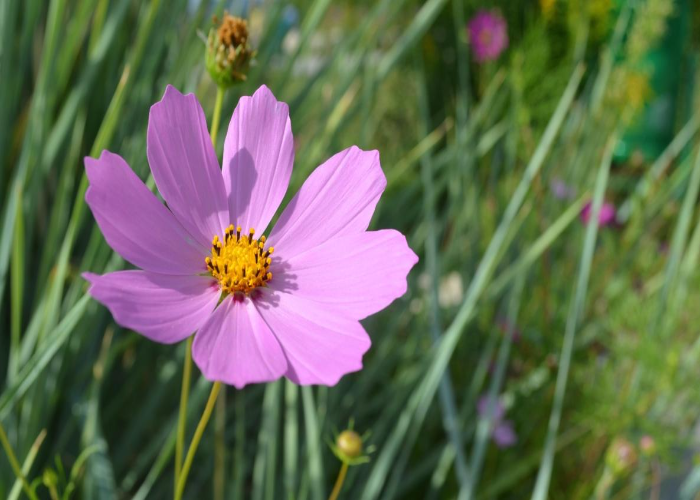
Cosmos bipinnatus are these magnificent daisy-like flowers in purple, pink and white shades. They range from 1-4 feet tall and are available in various hybrid series like Candy Stripe, Double Click, and Rubenza. This species might be shorter and less heat-tolerant than Cosmos sulphureus but grows exceptionally well in a sunny setting.
2. Cosmos Sulphureus
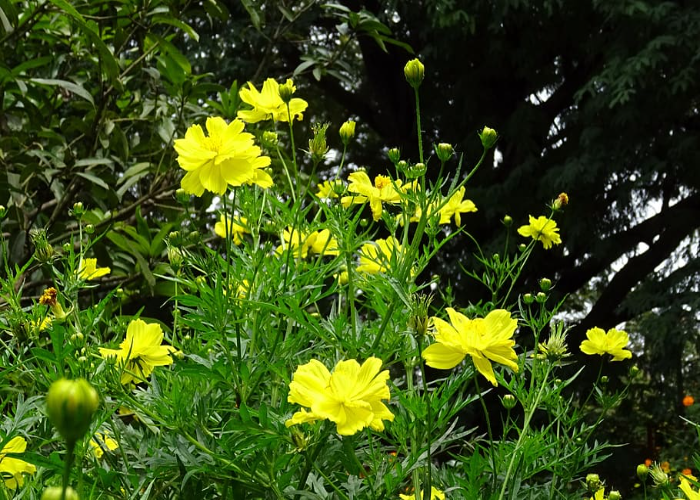
Cosmos sulphureus comes with pretty golden yellow blossoms. They are native to Mexico, Central America and northern South America. This category grows 2-6 feet tall and comes in double and semi-doubled flowers. There are various dwarf varieties that you can pot, like Mandarin, Limara Lemon, and Bright Lights.
3. Cosmos Astrosanguineus
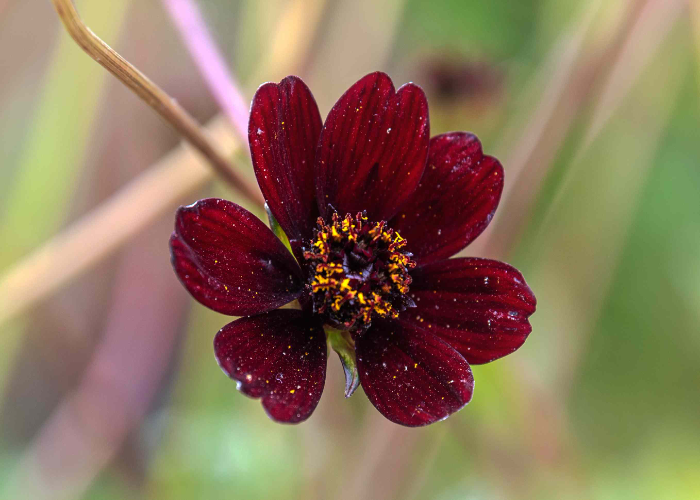
Cosmos astrosanguineus is also known as the chocolate cosmos plant. They have dark red flowers looking and smelling like chocolates. It’s a very rare species, so planting and maintaining them costs a little over budget. Just like dahlia flowers, they are perennial and grow in tubers.
Keeping Cosmos Prospering
Cosmos plants need full sunlight to flourish. So, never put them in a shady place in their growing period as it could affect their flowering. To encourage the process even more, deadheading the blooms is a necessity. It helps plants to focus their energy on creating more flowers instead of seeds. For faster blooms, trim between the main stem and leaves. Although, the lower you cut in the plant’s stem, the more time it will take to grow newer flowers.
Propagating Cosmos for Newer Growth
Cosmos are self-seeded plants. Hence, propagating them either by sowing seeds or stem cutting works just fine. Stem cutting stimulates more leaves and flower growth when reproducing the cosmos. Here’s how to do it-
- Buy a pot of moist, sterile and well-drained potting soil along with some pruning shears. Sterilize the scissors before using them.
- Get a small 3-inch pot and fill it with the bought soil. With the help of a pencil, create a hole of around 1-2 inches in the vessel.
- Look for the leaves with 3-5 leaf nodes on the stem, and carefully cut them under the last leaf node. Cut off the leaves at the last leaf node, leaving the node intact for newer growth.
- Deposit the cut tip of the stem in the hole of the pot made by the pencil. Ensure that the last leaf node stays above the soil line. Push down the soil all around the stem to keep it upright and stuck to its place.
- Afterwards, water the plant generously to keep it moist enough. New leaves will soon start growing after three weeks or so. When it happens, gently remove the plant’s root from the pot, and transplant it to a warmer location.
Encountering Problems While Growing Cosmos in Pots
There are hardly any problems you face when planting cosmos in pots. However, the cosmos do attract some troubling insects that could hamper their growth.
Pests and Bugs
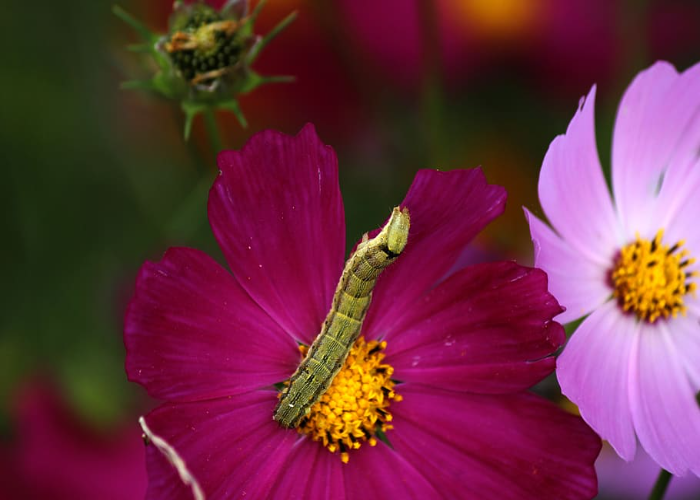
Snails and slugs are one such pest that causes severe harm to the cosmos. They can attack the growing cosmos seedlings and wipe out all the spring growth in seconds. Make a barrier with grit, gravel and eggshells around the pot to steer clear of slugs. Then, bugs like aphids or greenflies hover over seedlings and plants. Try watering them down or use an organic pesticide to keep bugs down.
Discolouration of Leaves
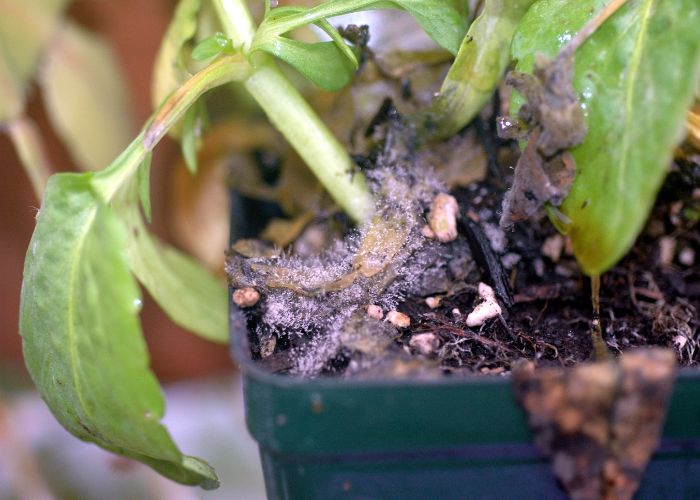
Dig deep beneath the soil to find out if your plant has a fusarium fungal infection (a common vascular fungal infection). If there’s a pinkish mass on the roots, your plant will likely die soon enough. The only way to stop this fungal infection is by dumping the whole plant before it spreads to others.
Leaves Fading

Plants with a sound ventilation system, proper sunny shade and watered adequately stay safe from fungal diseases. However, powdery mildew spores fly over the cosmos and will attach to those plants in shaded regions. The fungus forms a white powdery coating over leaves, causing foliage to turn yellow. To treat the infection, use a horticultural fungicide. Otherwise, the leaves will start dropping away.
Wilting Leaf
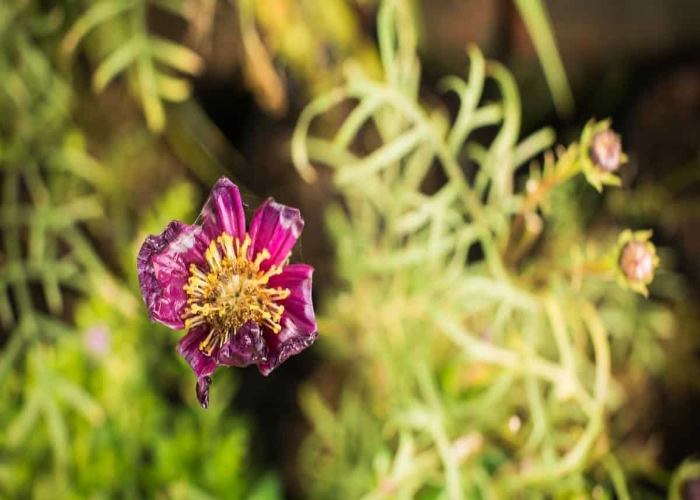
If your plant looks healthy and moist enough, the leaves are withering. Your plant is most probably suffering a bacterial infestation. It will start spreading from the stem to the flowers and the roots. Unfortunately, there’s no cure for the same, so throwing the plant away is the best option.
Final Thoughts
Choosing a cosmos plant from so many species might be challenging as every flower has its own appeal. Whether you decide on muted pinks or bright oranges, all will take your breath away.
Cosmos being a herbaceous plant, they are effortless and don’t require much maintenance. Some even smell and look like chocolates which is another great reason to plant them immediately. Planting cosmos in pots has various benefits, like making them easier to plant and move. Ensure they are placed in a well-lit position during their growing period so that they can produce vibrant flowers.
Are you planning to grow cosmos in pots? We’d love to see which cosmos you went for, so make sure your rising cosmos photos are in the comments below.
Frequently Asked Questions (FAQs)
How Fast Do Cosmos Grow?
Cosmos takes around 7-21 days to sprout, and the flowering starts within 50-60 days of germination.
How Long Can the Cosmos Live?
Cosmos live for a brief period. They are annual plants that sprout, flower and reproduce in a season. And, shortly, dies once they are done flowering.
Do Cosmos Grow Well in Pots?
Yes, the shorter ones are great for potting. You can either buy cosmos seedlings or grow them undercover and have a beautiful garden by the end of the spring.
Which Fertilizer Works Best for The Cosmos?
Never use fertilizers for the cosmos, as they can affect the soil badly, resulting in weak stems, late flowering, and wilted leaves.
How Many Cosmoses Can You Plant in a Pot?
You can grow one cosmos plant per gallon of your pot. Remember not to choose enriched soil as it will make your plant grow taller, which will require staking later.
Do the Cosmos Come Back Every Year?
No, being an annual plant, you must resow the seeds every spring to bring the cosmos back. However, chocolate cosmos being a perennial and grown in a tuber, does come back year after year.
Which compost works fine for potting cosmos?
A good quality, peat-free, multipurpose compost with some pebbles added to the mix works best for planting cosmos in pots.

